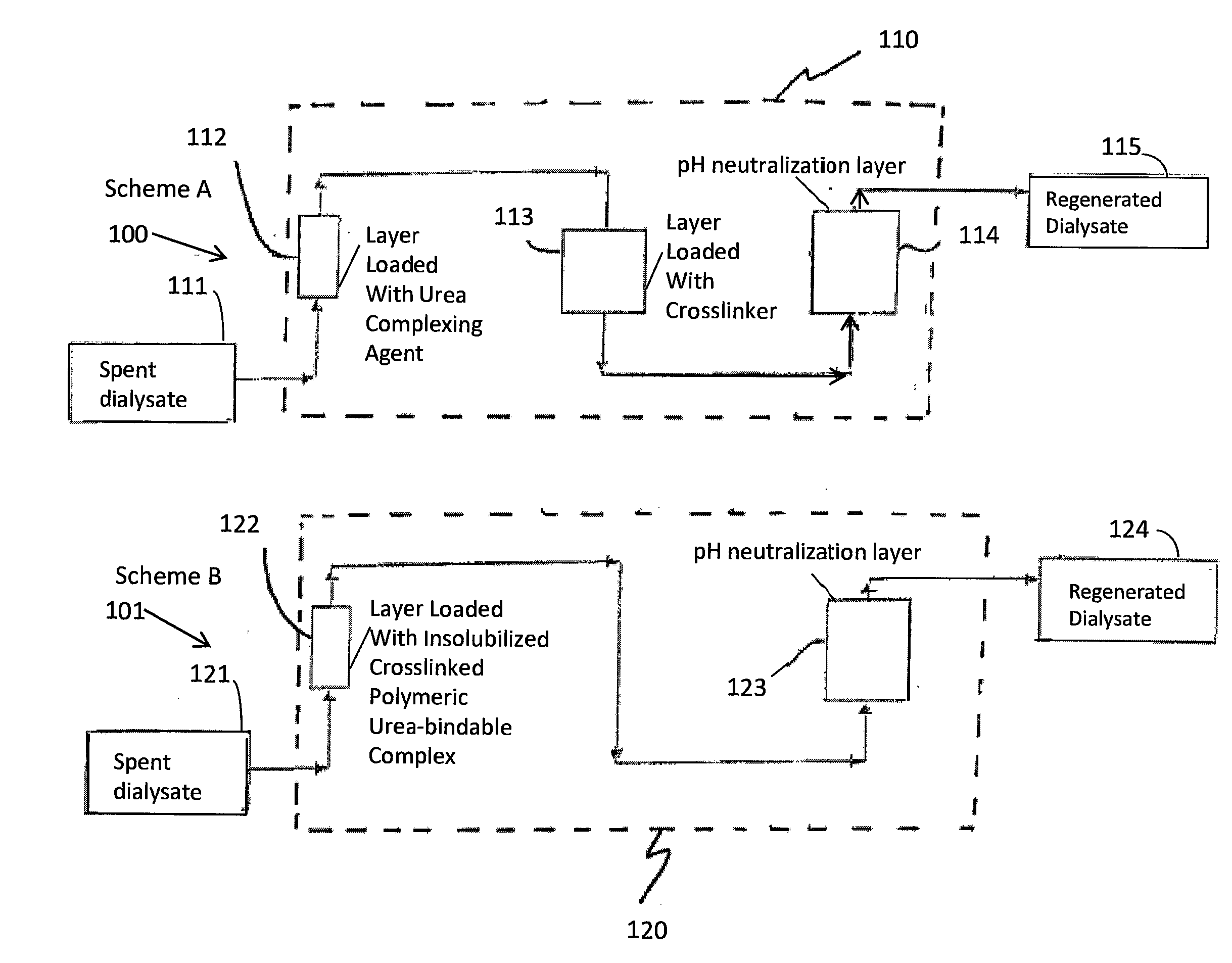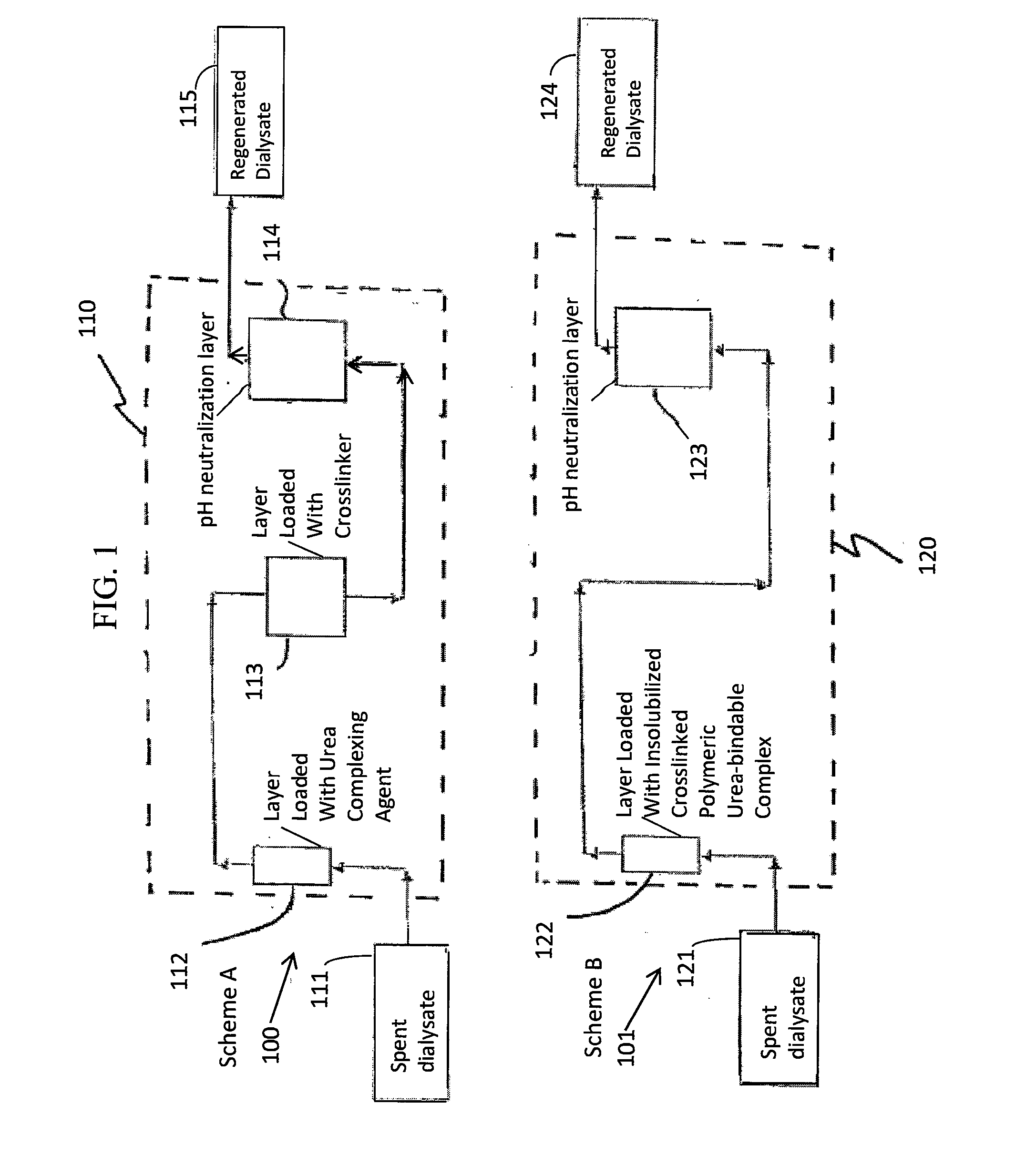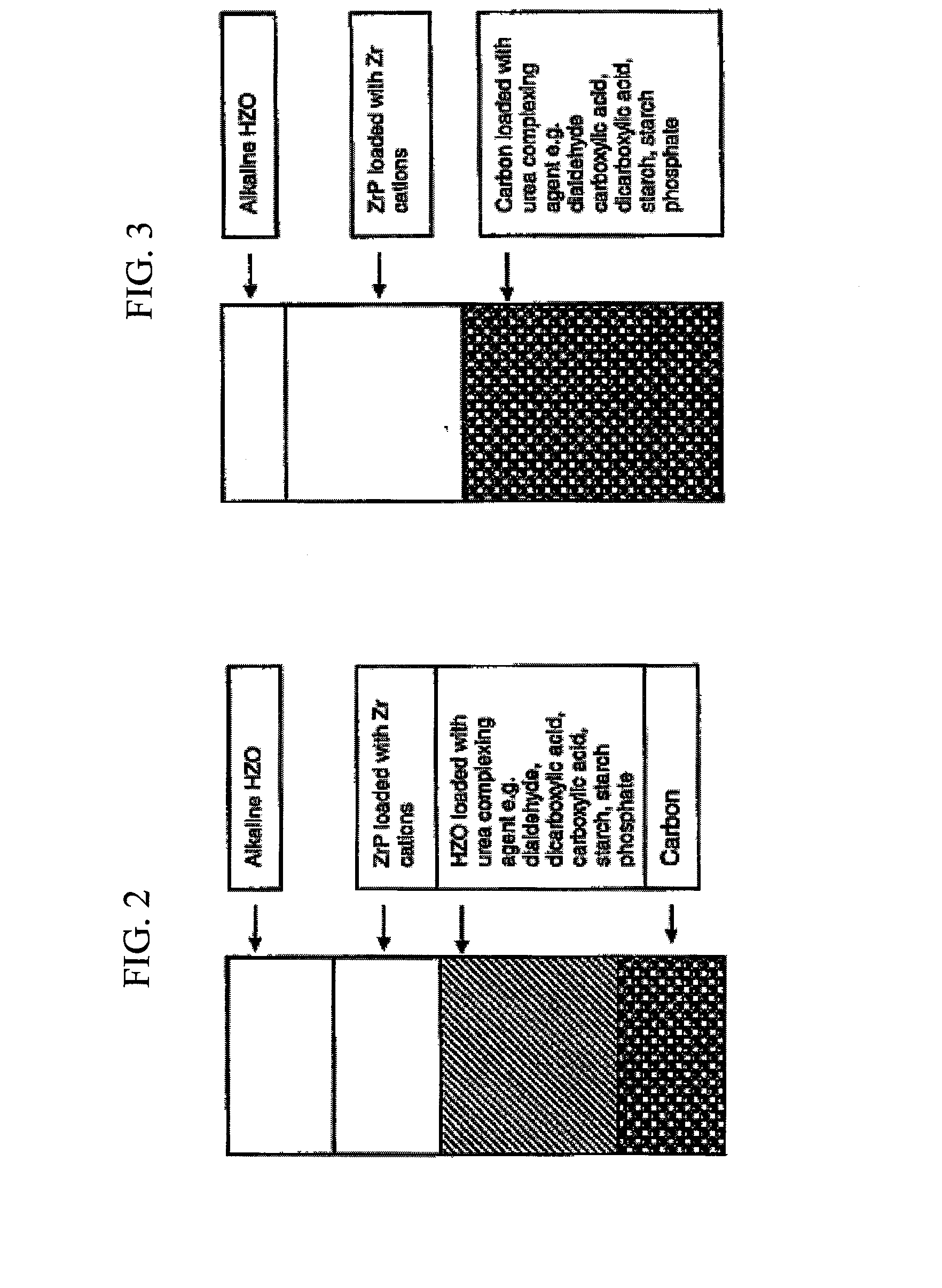Materials For Removal Of Toxins In Sorbent Dialysis And Methods And Systems Using Same
a technology of sorbent dialysis and materials, applied in the field of sorbent dialysis, can solve the problems of endotoxin removal needs, accumulation in body fluids, dialysis using an immobilized urease layer,
- Summary
- Abstract
- Description
- Claims
- Application Information
AI Technical Summary
Benefits of technology
Problems solved by technology
Method used
Image
Examples
example 1
[0070]A zirconium glyoxal treated activated carbon for use as a direct urea binder was prepared in the following manner.
[0071]A solution of zirconium oxychloride solution was prepared by dissolving 100 g of the solid in 150 ml deionized water. 70 g of 40% glyoxal solution was added to the solution to form a homogeneous zirconium glyoxal complex solution by stirring. A 100 ml concentrate hydrochloric acid was added to the solution thereafter with continuous stirring until the resultant solution was clear. The solution was then transferred to an 800 ml beaker and 100 g of activated carbon was added to the beaker and immersed in the solution at room temperature for 4 hours. The residual solution was then removed by either decantation or filtration and the treated carbon was acid washed twice with a 250 ml diluted hydrochloric acid with acid strength of approximately 3.5 N, followed by decantation or filtration in each step. The solution-soaked carbon in the beaker was then dried in ove...
example 3
[0078]Polyamine intercalated zirconium phosphate was prepared and then studied to observe its efficacy as a glyoxal adsorbent and as indicator of its ability to prevent glyoxal leakage in a column having urea binding carbon.
[0079]30 g of acid zirconium phosphate was added to 120 ml deionized water with moderate agitation. 60 g of triethylene tetramine was then slowly added to the slurry. After the addition was complete, the slurry was then titrated from pH 12 to about pH 7 by adding 70 ml concentrated HCl slowly to the slurry. The slurry was then heated to 80° C. and maintained at this temperature for 4 hours. After heating, the slurry was then vacuum filtered and the TETA intercalated ZrP filter cake was then rinsed with deionized water until no excessive or unbound polyamine was detected. The filter cake was then air-dried to form a free-flowing powder. The glyoxal adsorption capacity of the resulting powder (TETA intercalated ZrP) was determined in a 2 inch column by passing 2 L ...
example 4
[0080]The removal of sulfate anion and copper metal ion for water purification to make dialysate was studied in this experiment. 2.5 L tap water containing 50 PPM sulfate and 20 PPM Cu2+ (from 1000 PPM AA stock) was pumped through a 2 inch column containing a urea binding carbon similar to that described in Example 1 (FIG. 8A column) and tested for residual sulfate and Cu2+ in the treated water (i.e., the column effluent). No sulfate (SO4+2) and copper (Cu+2) were detected in the column effluent.
[0081]In additional experiments conducted on the removal of sulfate from water for water purification to make dialysate, the test was repeated by using 250 ppm sulfate in contaminated water to be treated by the column. It was found that the column was able to completely remove the sulfate so that the sulfate level in the column effluent was below the detection limit.
PUM
| Property | Measurement | Unit |
|---|---|---|
| temperature | aaaaa | aaaaa |
| temperature | aaaaa | aaaaa |
| volume | aaaaa | aaaaa |
Abstract
Description
Claims
Application Information
 Login to View More
Login to View More - R&D
- Intellectual Property
- Life Sciences
- Materials
- Tech Scout
- Unparalleled Data Quality
- Higher Quality Content
- 60% Fewer Hallucinations
Browse by: Latest US Patents, China's latest patents, Technical Efficacy Thesaurus, Application Domain, Technology Topic, Popular Technical Reports.
© 2025 PatSnap. All rights reserved.Legal|Privacy policy|Modern Slavery Act Transparency Statement|Sitemap|About US| Contact US: help@patsnap.com



